A Creative Container Herb Garden
I’ve ventured into the wild where creativity meets necessity, along with ‘I just gotta use this and make it cute’. I recently decided to transform an old wicker chair into a container herb garden, a very creative container herb garden that is. Get ready to look at your own forgotten treasures and repurpose them into something useful.

It all started when this adorable blue vintage wicker chair that used to sit on the porch at the cottage got wrecked. I think someone went to stand on the seat (dumb ways to die) and ended up putting their foot through it. It wasn’t me. Seriously, I know better. It’s vintage wicker! Not the most hardy of chairs.
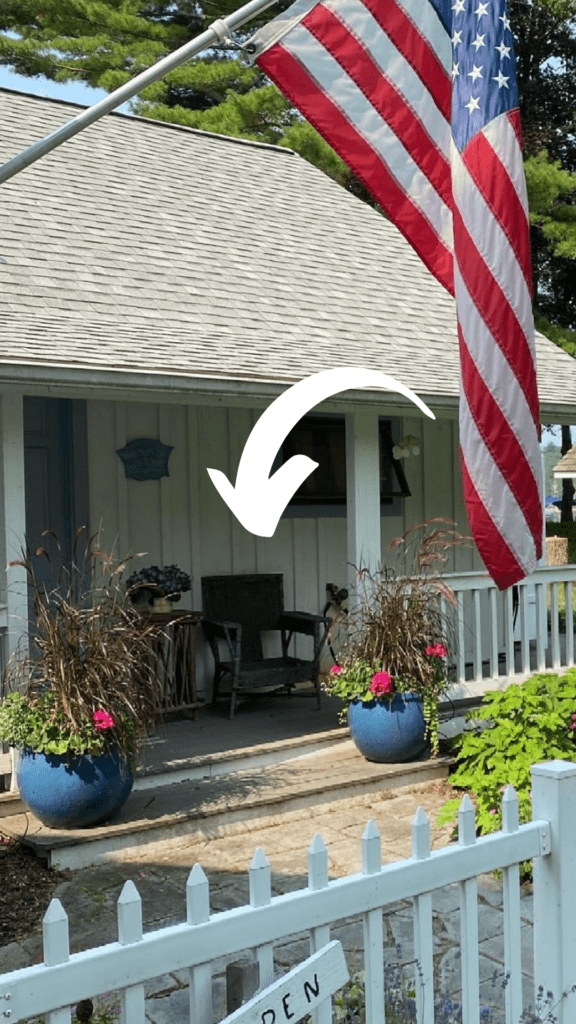
I was pretty bummed about it and didn’t want to throw it out because it’s pretty cute, and well, the perfect shade of blue. With a touch of imagination and a not so green thumb, I decided to use it in the garden.
Trash or Treasure? A Place to Grow Herbs
Once I decided that it couldn’t be trash, I began to look at it differently. How could it be repurposed? I turned it upside down and noticed it had strong wood dowels that crossed over for the seat support. The wicker edges had just given way and broken off. However, it could still support a fairly large container and I had just the thing, a galvanized tub. It was the perfect size for container gardening!
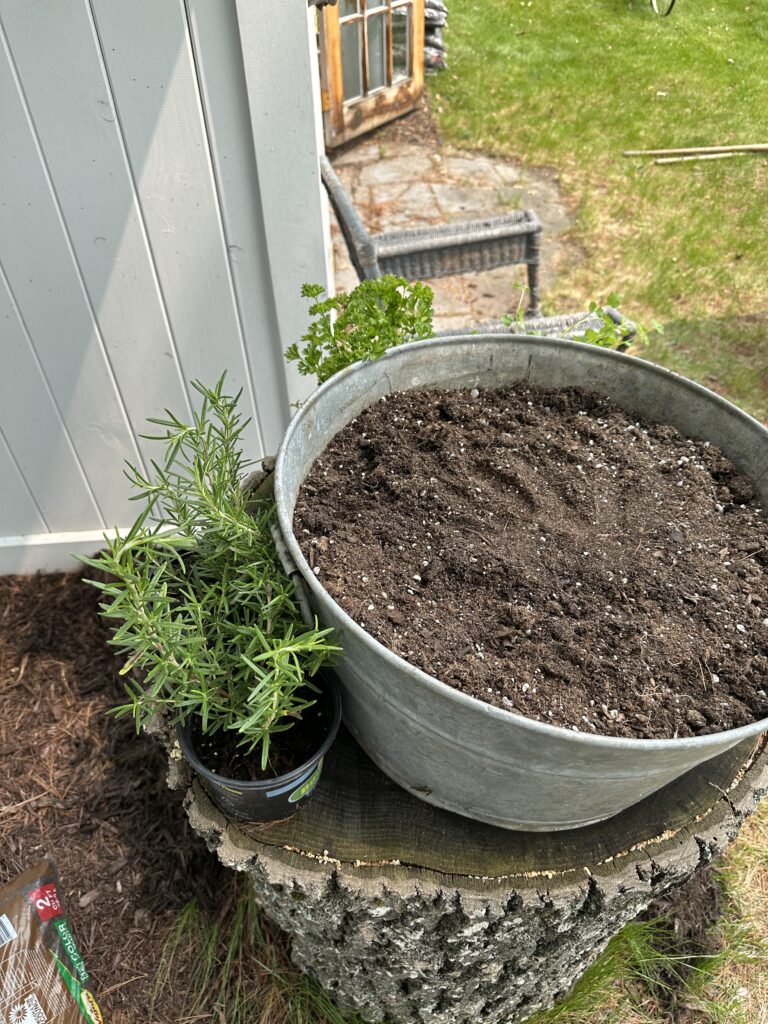
Wicker Chair Herb Garden Space
Obviously I could have taken the easy route and just planted the herbs in the ground. Where’s the fun in that? A potted herb is so much more charming. And if I’m going to take the time to grow herbs, then I might as well make it cute. Hopefully you’ll be inspired to grow your own herbs, it is pretty easy.
I got my trusty garden clippers and snipped the other side of the broken wicker strands so the seat would sit flat against the wood supports. I decided to leave the flap in tact for extra support and aesthetics. The tub would fit perfectly.
The tub already had drainage holes since I had used it before for other plants or flowers. This is super important as all plants need well draining soil so the containers must have drainage holes. I decided to start with fresh dirt cause I never like to have poor soil when I am trying to grow herbs or vegetables. But you can also just dig in the spot of your garden that might yield some fresh compost from leaves and other garden clippings.
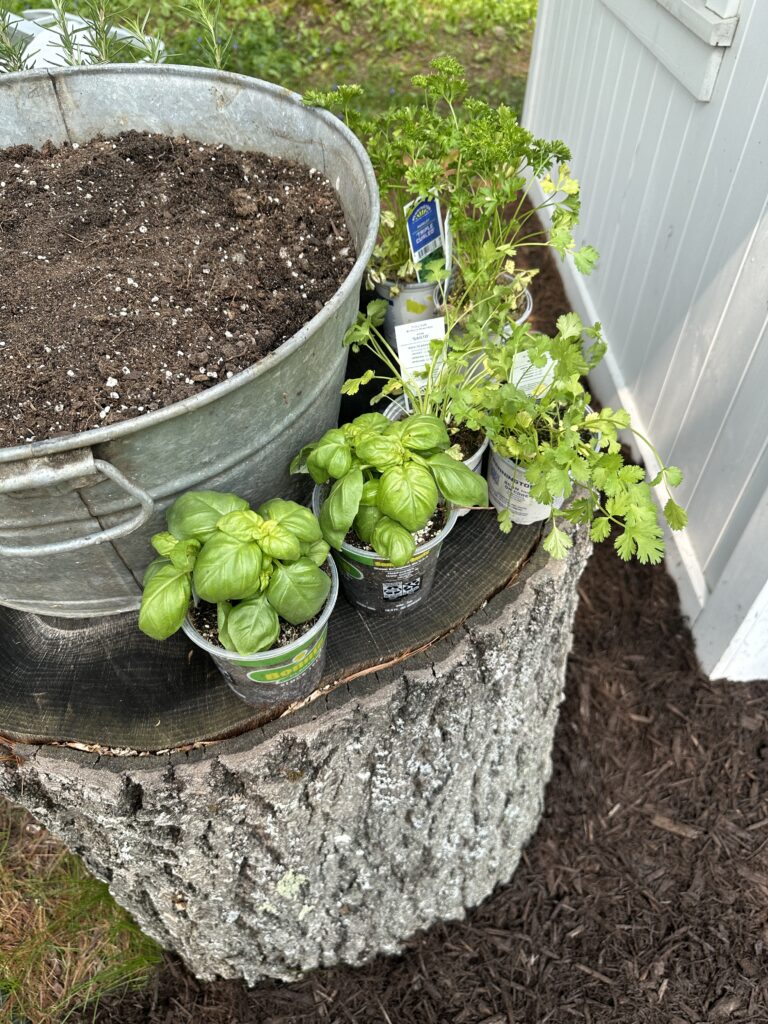
Gardening with Herbs
My little garden at the cottage has many plants and flowers but currently no perennial herbs. Well, I do have several lavender plants but no real culinary herbs. This year I thought I would add those fresh herbs that we always seem to be buying at the store when we are cooking and barbecuing for our crowd. The best herbs come fresh from the garden!
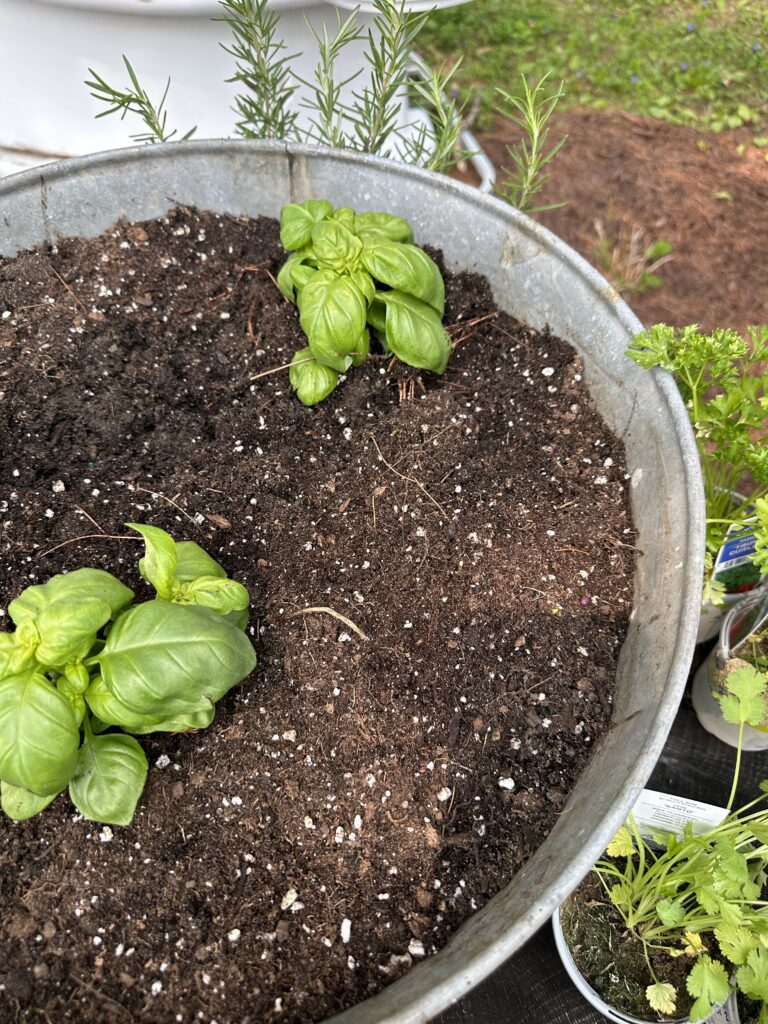
I even decided to do a little raised garden bed and add some tomato and pepper plants too. I always like to grow the things we eat a lot of. In our past houses I have always had a kitchen garden with perennial herbs that I can use all the way past Thanksgiving in our climate. After that, I gotta grow indoors for fresh herbs.
Growing Herbs in Containers
When growing herbs in containers consider size and location. Growing herbs in small pots can help keep them away from local pests, like bunnies or squirrels, which I have a lot of. You can even put a perennial herb in hanging pots. You just need a reliable water source.

In Michigan our growing season seems pretty short, so I started with potted herbs from Home Depot rather than starting from seed. It’s much easier to go buy a few herb plants and get them growing, but if you want to grow herbs from seeds, start them early indoors. Most herbs grow pretty speedy in the summer heat.
Plant Perennial Herbs That You’ll Use
I chose for my herb garden all the ones we use during summer cooking. My first grab was the basil plants. These get pretty tall for herbs, so I would place them in the center of the container. I love to grow basil and last time I did, the thing went wild! We even had clay soil, and I had so much basil I didn’t know what to do with it all.
Next I got rosemary, I love it’s earthy flavor. It’s so good in chicken marinades, potatoes, and pork.
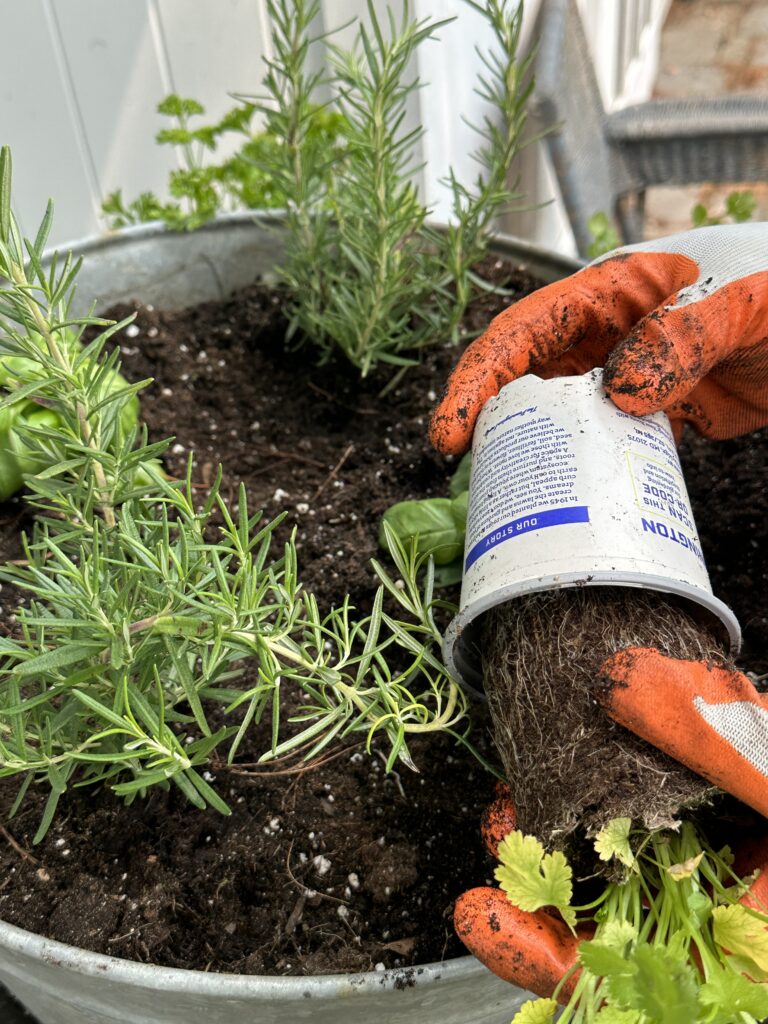
The last two were parsley and cilantro. Those are some of our favorite herbs. If I need tons of cilantro, like for my barbecue chicken quesadillas that we love on the grill, I might still have to buy a bunch from the store, but a few small plants will yield enough herbs for everything else we would need.
I know lots of people like to grow mint, but I’ve never been a fan. Sorry mint, I have limited space in my tiny herb garden. Maybe next year. I know my DIL likes to use many mint family type herbs, so maybe if I grow some, treats will come my way! I’ll be building a greenhouse this summer, so I might try to grow from seed next spring. We’ll see.
I do love thyme and sage but I don’t use those too much in my summer cooking. They are more woody herbs and are ones I use predominantly in the fall, so they didn’t make the cut. I will be growing those at home in my main garden. I kind of picked some of the easiest herbs we use and these work great in raised beds.
All of the ones I chose can be planted near each other. Apparently there are many herbs that aren’t as friendly, so you have to check to see what herb plant can be planted next to another herb. Here is a good source. Who knew even the herb world had ‘mean girls’?
Culinary Herbs
To take it a step further, think about what specific recipes you make and culinary herbs you generally use. Selecting herbs that suit your taste preferences and cooking style, such as mediterranean herbs, favorite herbs for a pasta sauce or a favorite pizza herb can help you focus what to pick. Growing your own herbs will be more fun when you actually use them.
Yes, it can even save you time and money! But when having your own herb garden, you’ll feel a deeper connection to the ingredients you use, and a sense of pride and satisfaction when you incorporate different herbs into your favorite recipes.
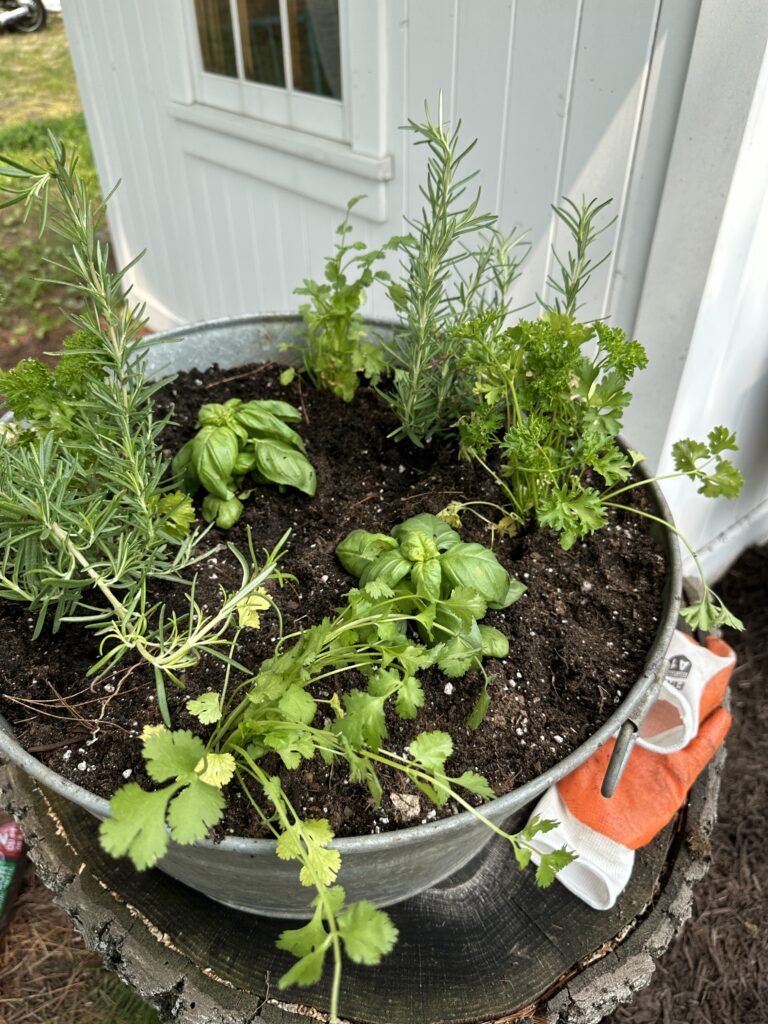
Moist Soil, Sun, and Water
Now that the herbs are planted in their own container, they are ready to get growing. Some herbs prefer full sun, but most are shade lovers for a few hours of the day. Too much sun can scorch the leaves. In the beginning and during the peak of hot summer I keep everything watered daily.
Providing all the things; well drained soil, full sun, and water, beneficial insects will make their way into your herb gardens. Flowering herbs will look good in the garden as well.
As we near fall and get closer to the time to harvest herbs before winter, they are usually fine on their own since the sun is less hot and we have more rain. But all my other herbs used for Thanksgiving like sage, thyme and rosemary stay good in the ground until then, as they are pretty cold hardy.
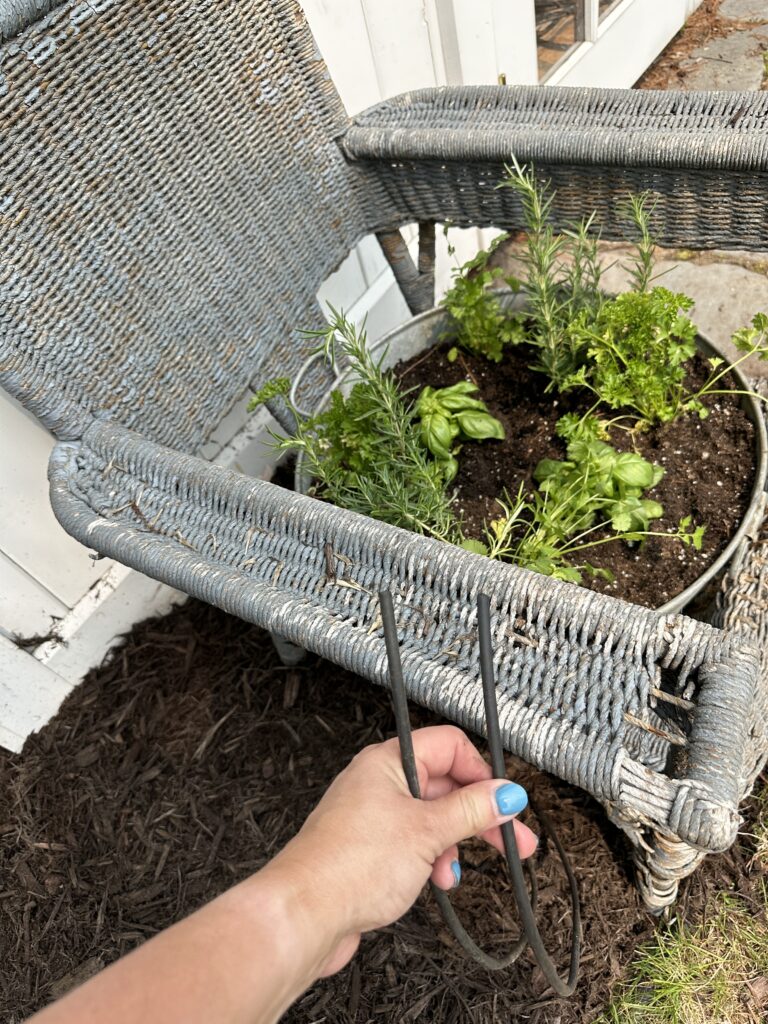
Plant Herbs Year Round
In my zone (Michigan) thyme, oregano, sage, and lavender are perennial herbs I like to grow. Oregano can get a little aggressive in herb gardens and take over, so I plant it where it has limits. Rosemary and basil are perfect herbs to grow in a kitchen windowsill, if you have enough light. They look cute in terra cotta pots or some other decorative vessel.
Having herbs in pots are just about the only indoor plant I can manage, as for some reason I have killed all others in the past. But growing herbs indoors is very satisfying and most culinary herbs are easy to manage.
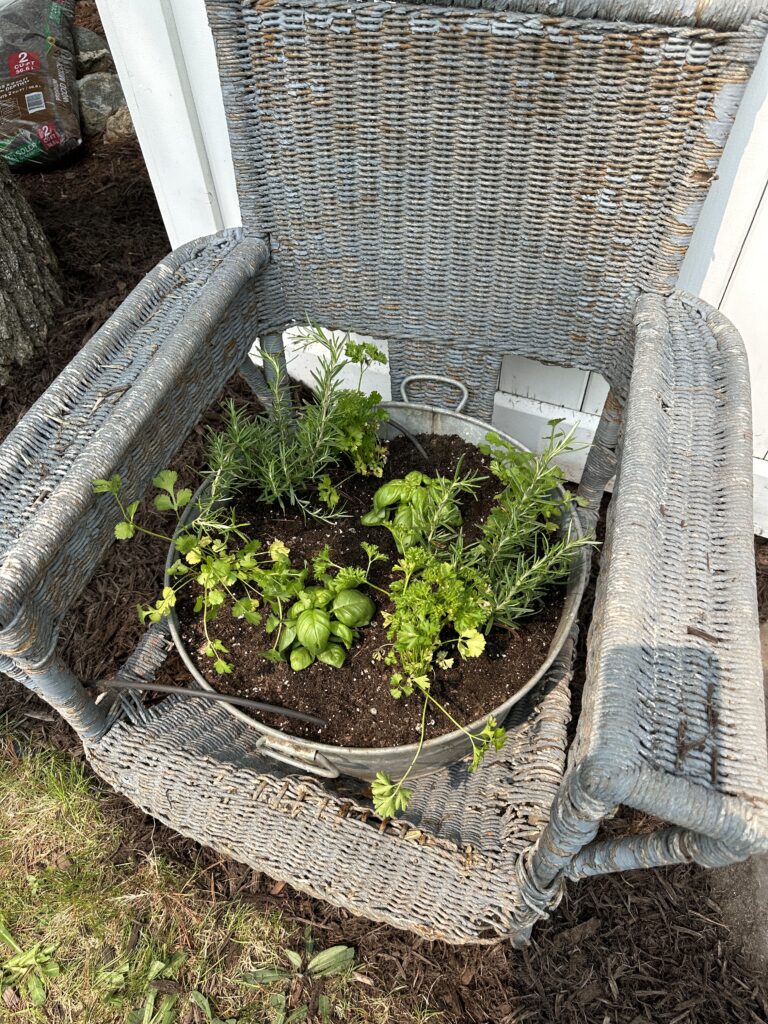
How to Store Herbs You’ve Grown
Storing herbs that you’ve grown is important to preserve their flavor so you can use them in the future. There’s nothing like growing and harvesting your own. Here are a few ways that you can preserve and store them:
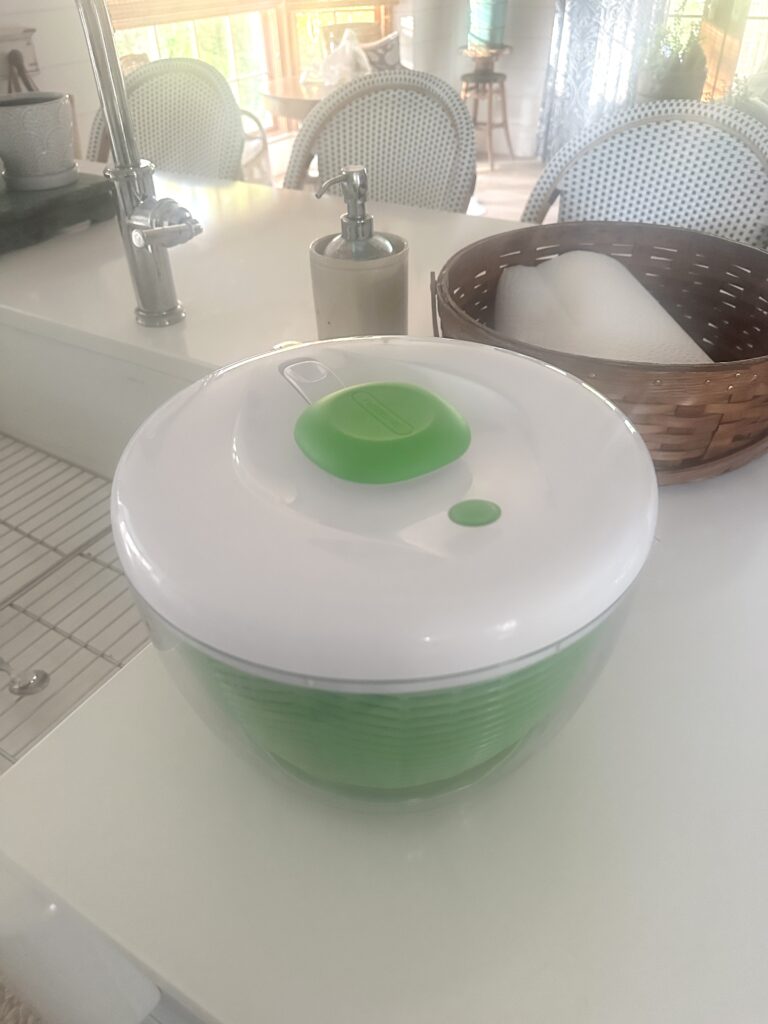
Harvesting: Pick your herbs in the morning when they are no longer wet but before the heat of the day. The essential oils are most concentrated at this time, and will ensure maximum flavor.
Cleaning: Gently wash the herbs under cool running water to remove any dirt or bugs. You can let them dry on a clean towel, but I like to use a salad spinner to remove excess moisture. This one is my fave.
Drying: Drying herbs is super easy and an excess to make them look cute. Simply tie small bunches of herbs together with a string and hang them upside down in a well-ventilated area away from direct sunlight. Of course a vintage drying rack would be super charming or just lay them out on a clean, dry towel. Air dry until they become brittle and crumble easily.
Storage Containers: Once your herbs are dry, it’s time to store them in cute jars of course. These airtight glass jars transformed my spice drawer and came with fabulous labels. If you want to store in bulk, Mason jars with a tight-fitting lid work well. Obvi, make it cute with these wood lids..
Labeling: To avoid the inevitable ‘what the heck is this?’, label your containers with the name of the herb and the date of harvest.
Remember to get rid of any herbs that show signs of mold before you dry them. And if your herb gardening provided a bounty, dried herbs make great friend gifts around Christmas or as a housewarming gift to new neighbors.
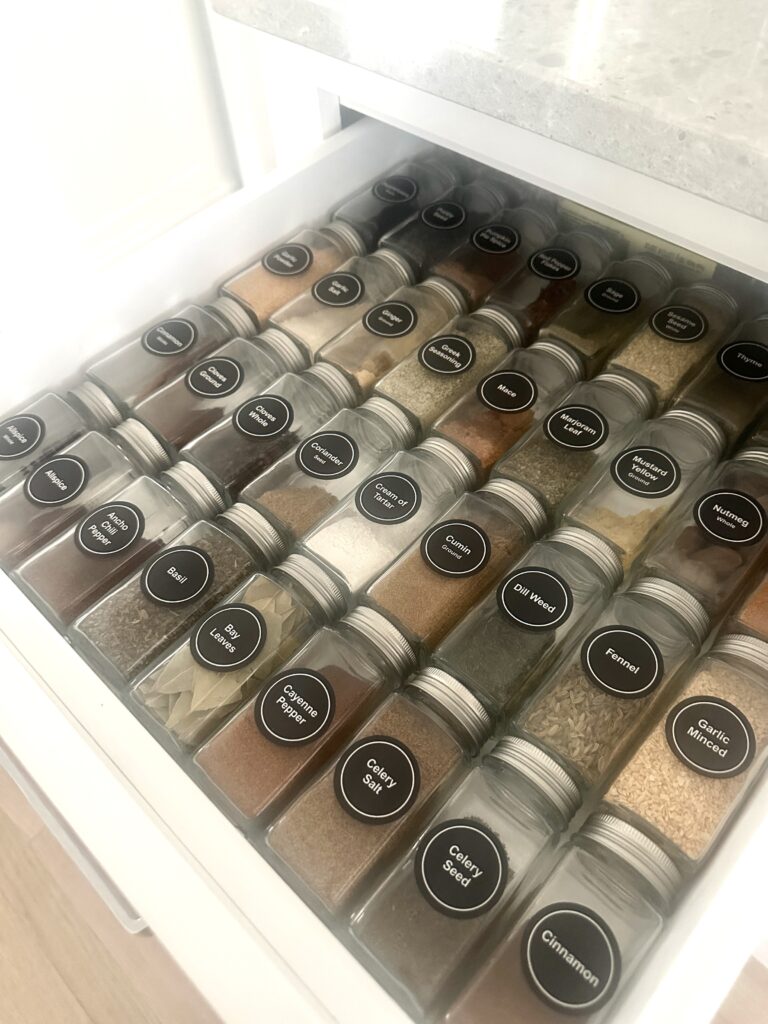
Give Herb Gardening a Try
Growing annual herbs can be done in a raised bed or pots. Whether you sow from seeds, do a quick trip to your local garden center, or even buy kitchen windowsill type herbs at the grocery store, herb gardening can be rewarding. I hope you will try growing herbs, even herbs in pots just for a season, as you may discover you really like it. To me, there’s nothing like growing herbs at home!
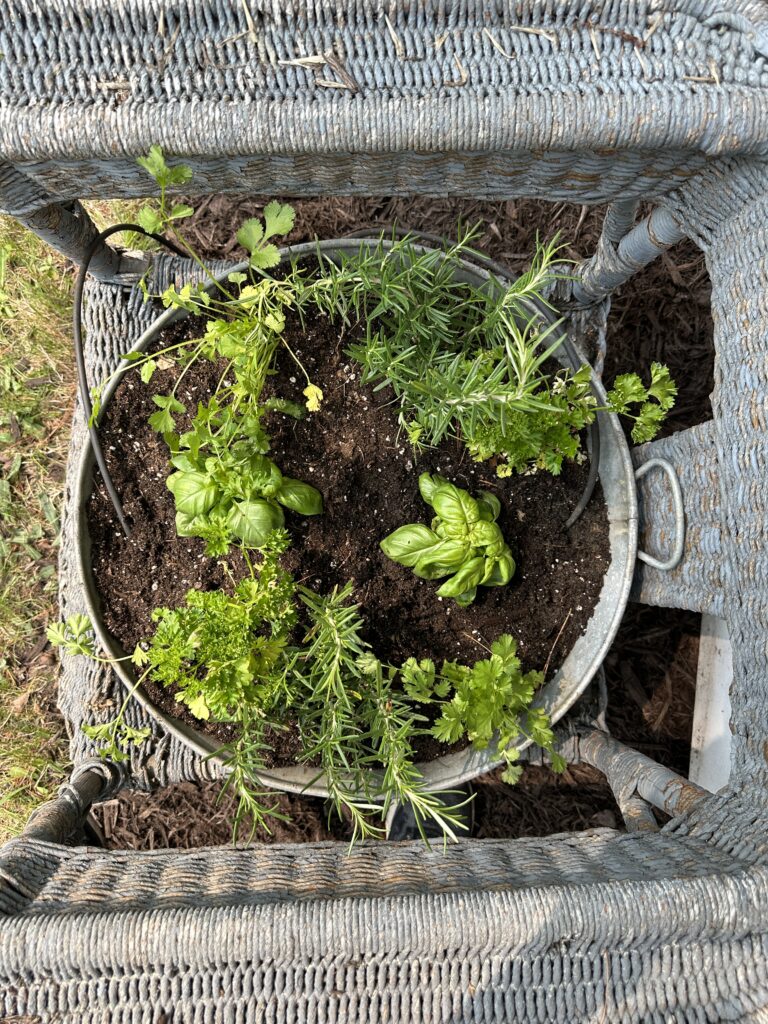
You can see how our cottage garden started out years ago here. Follow me on Pinterest for inspiration.



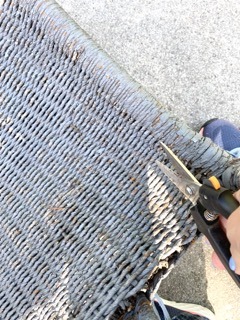
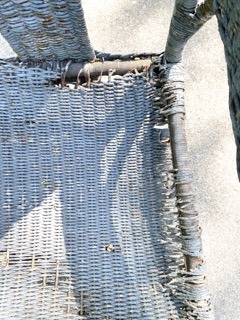
Thanks Susan. I felt like it was so much better to repurpose that chair instead of burning it in the campfire!
I love these being grown in the wicker chair! It’s too cute!